Rhinos are iconic. Anyone who has ever been on a safari can tell you that seeing one in the wild is nothing short of awe-inspiring. What makes a rhino, though? Is it their giant stature or immense power? When asked this question, most would probably say their horns. Unfortunately, their horns are also the reason they are under threat from poachers and international crime syndicates. A recent study has shown that removing rhinos’ horns is one of the best ways to reduce poaching.
Rhinos are poached primarily for their horns, which are in high demand in some Asian countries for traditional medicine and as a status symbol for wealth. The demand for rhino horns has become uncontrollable, pushing both black and white rhinos to the verge of extinction. Despite much effort and money spent over the decades, rhino populations continue to decline globally.
Populations of black rhinos have plummeted from around 70,000 individuals in 1970 to just 2,410 in 1995 – a 96% decline in only 20 years, with their current population being just over 6,000. White rhinos, once reduced to as few as 50–100 individuals in the early 1900s, now number approximately 17,464, thanks largely to successful protection in southern Africa.
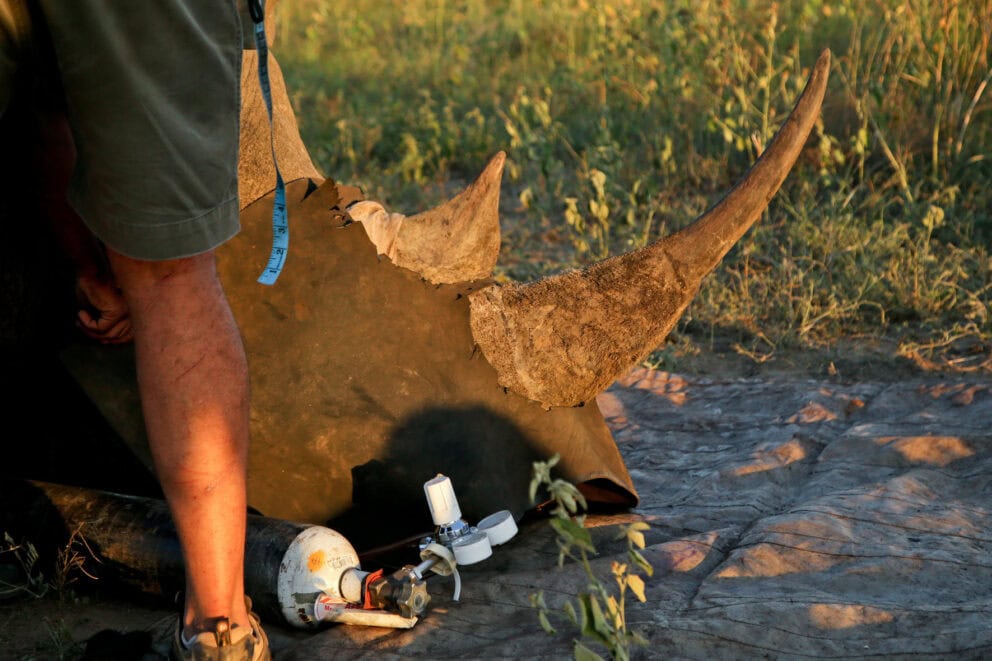
However, two subspecies of both black and white rhino are considered extinct in the wild. The western black rhino was declared extinct in 2011 after several surveys failed to find any individuals. Additionally, the northern white rhino, once found in several African countries, is also extinct in the wild, with the last two surviving individuals, both female (Najin and Fatu), living in Ol Pejeta Conservancy in Kenya. They live under constant protection from poachers.
In response to this crisis, numerous local and international conservation initiatives have been established to save these animals from extinction. From increasing ranger presence to anti-poaching units with tracking dogs and investing in the latest rhino tracking technology, saving rhinos is a feat that has cost over R1 billion ($US 74 million) annually, according to a study on the effectiveness of dehorning against poaching.
In light of this, a new plan was forged: dehorning. You can’t kill a rhino for its horn if it doesn’t have one. At first glance, it would appear that this solves the problem. However, the situation is much more nuanced than that.
What is Rhino Dehorning?
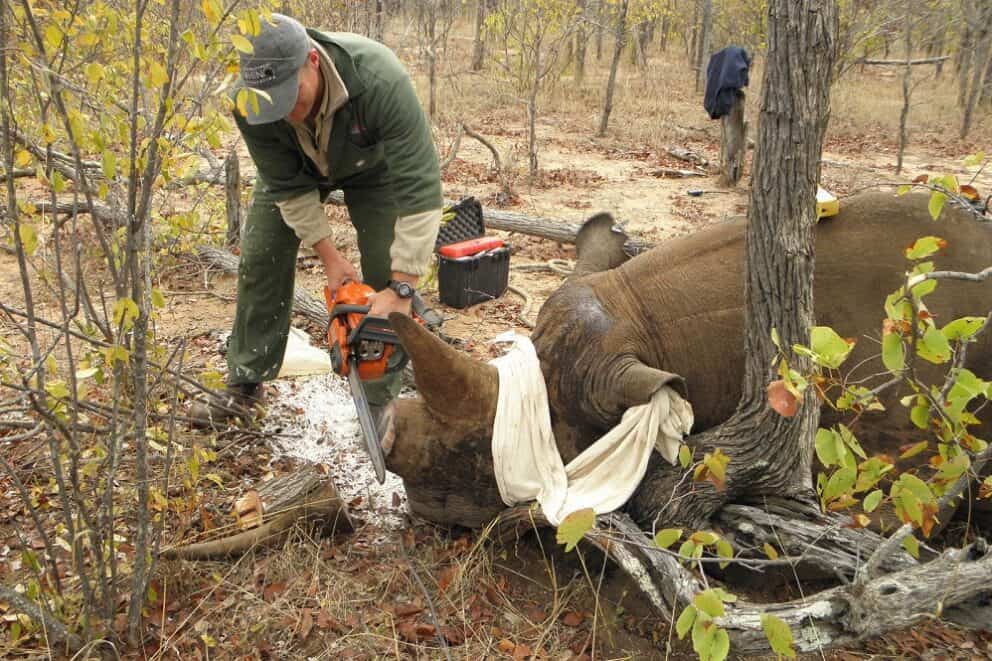
As you may have guessed, dehorning involves removing a rhino’s horn to prevent poaching. The horn isn’t completely removed; rather, it’s trimmed down to a small stump.
According to Save The Rhino, rhinos are usually darted from a helicopter (or from the ground on smaller reserves). Once the anaesthetic has set in, a team approaches the animal, covers their eyes and ears to prevent disturbance, and marks the point of horn removal with a pen. This location is usually 7 cm/2.7 inches from the base of the front horn and 5 cm/2 inches from the base of the back horn.
Usually, around 90% to 93% of the horn is removed, being trimmed just above the germinal layer, which enables it to regrow. The remaining stump is then smoothed and covered with Stockholm tar to prevent cracking or drying. To be an effective deterrent to poachers, rhinos are dehorned every 18 to 24 months following regrowth.
The Effectiveness of Dehorning
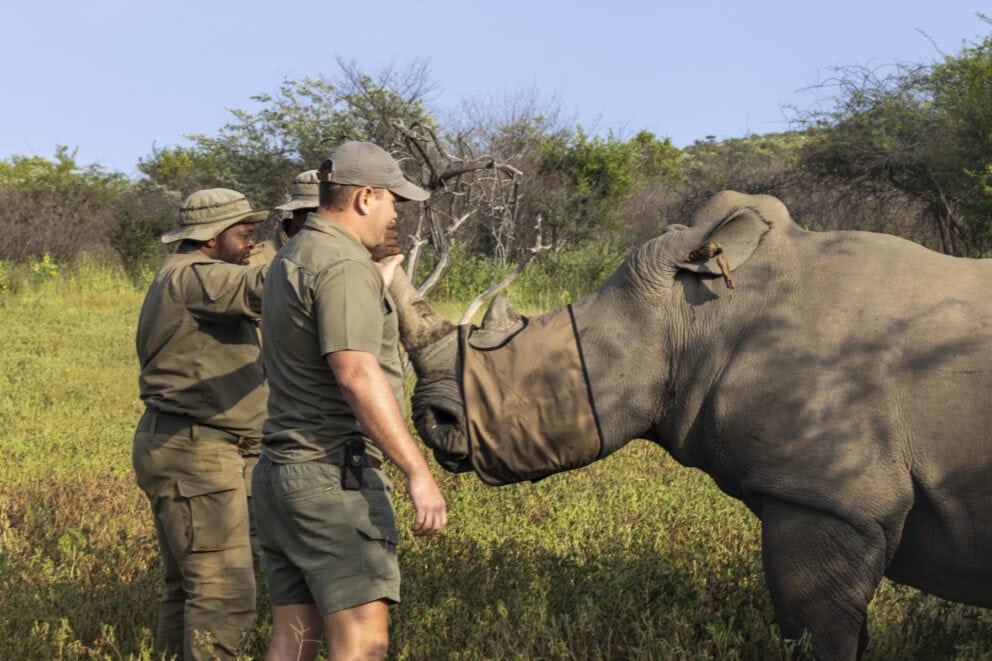
As part of this years-long study undertaken in the Great Kruger National Park, South Africa, and headed by conservation giants including Save The Rhino International, the Greater Kruger Environmental Protection Foundation, Dr. Timothy Kuiper, Cathey Dreyer, and others, the dehorning of rhinos was found to be the most statistically effective way to reduce poaching.
“Dehorning was the one intervention where there was very strong evidence that it reduced poaching,” says Dr. Kuiper, who was brought into the project as the scientific lead.
The study showed an abrupt and drastic decline in poaching after dehorning over 2,000 rhinos across 11 reserves over 5 years. Despite the continued investment into anti-poaching methods (i.e., rangers, K9 units, access controls, detection cameras, etc.), the study found that there was no statistical evidence that these interventions reduced poaching. On the other hand, the dehorning of rhinos saw a dramatic decrease in poaching, approximately 78%!
“[This] doesn’t mean these other interventions are not working. They actually were working. If you measure them by the detections of poachers, for example, arrests of poachers, dogs, rangers, and cameras achieve many poacher arrests. But in terms of being associated with reduced poaching, it wasn’t the dehorning proof,” says Dr. Kuiper.
He also emphasised that over the years that dehorning was implemented (from 2019 to 2022), a large reduction in poaching rates was seen in the months following.
Dehorning Is Not a Magic Bullet

While dehorning rhinos is effective, Dr. Kuiper and the rest of the team have emphasised that it’s a short- to medium-term solution, not a definitive “magic bullet” to stop rhino poaching. Instead, it works in tandem with other anti-poaching methods.
“It’s important to remember that we need to address the bigger drivers of wildlife crime. Demand for the horns and poverty inequality make it easier for criminal syndicates to recruit people into their operations – these are the bigger kinds of drivers and realities that need to be addressed. [Dehorning] is buying time for us to do that harder work, but we can’t just dehorn and not do that bigger work.”
In addition to this, dehorning may also just divert poaching into other reserves, where rhinos aren’t being dehorned. Therefore, a long-term solution to poaching is crucial.
How Does Dehorning Affect Rhinos?
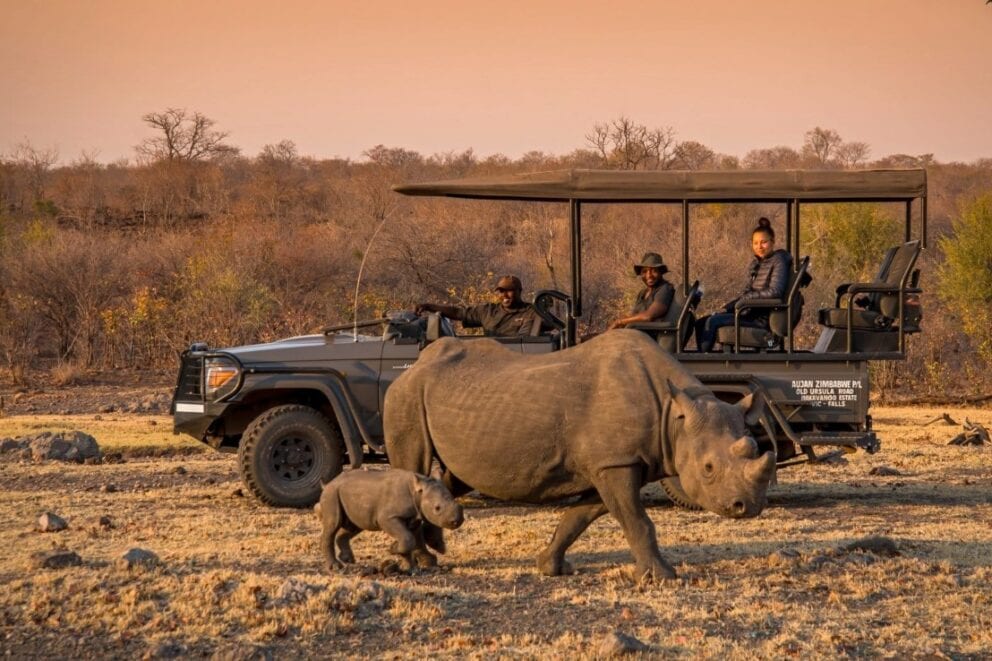
Rhinos need their horns for several behavioural functions, including defending territories, protecting their calves, and maternal care (they use their horns to guide their calves). This issue is an important consideration in the dehorning debate.
Given that horn removal is a relatively recent project, research is still limited and studies have shown varying results. One study found that dehorned black rhinos in 10 South African reserves reduced their home ranges and social interactions, while another 2022 study in Namibia found that dehorning had no effect on the animals’ age at first reproduction, inter-calving intervals, birth sex ratios, calf survival rate, or overall lifespan. In Botswana, the observations of nine dehorned white rhinos revealed no significant changes in behaviour either.
According to Cathey Dreyer, Head Ranger at the Kruger National Park, dehorned rhinos in Kruger haven’t displayed any negative changes in their behaviour after being dehorned.
“To date, we haven’t really seen any negative impacts. We dehorn rhino, we see them with calves shortly after that. We continuously have to, unfortunately, dehorn rhino so we see the same animals. So we take comfort in the fact that they obviously have survived the experience and continue to calve…We certainly haven’t seen any negative impacts, and none to the degree that we would say we need to stop dehorning,” she explains.
What Happens to the Horns?
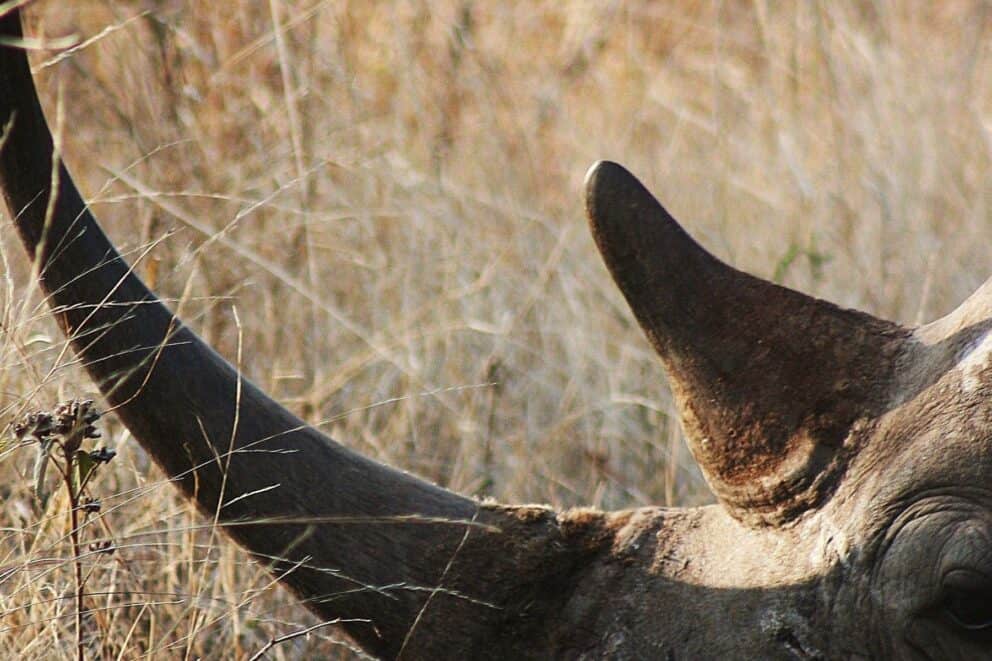
The issue of removing rhinos’ horns leads to another debate: what should be done with the horns? Are they destroyed? Or are they stored? According to Dreyer, the South African government has very strict regulations on how to store them.
However, the decision to store or destroy them is often based on the position of the owners of the horns – they can be either government or privately owned.
“Every sort of protected area or reserve is getting very specific reference numbers that are allocated to each single horn. They are obviously kept in very, very secure locations with very tight security. And then we also have to put additional measures in place to actually protect the people that now have to be responsible for securing the horns,” says Dreyer.
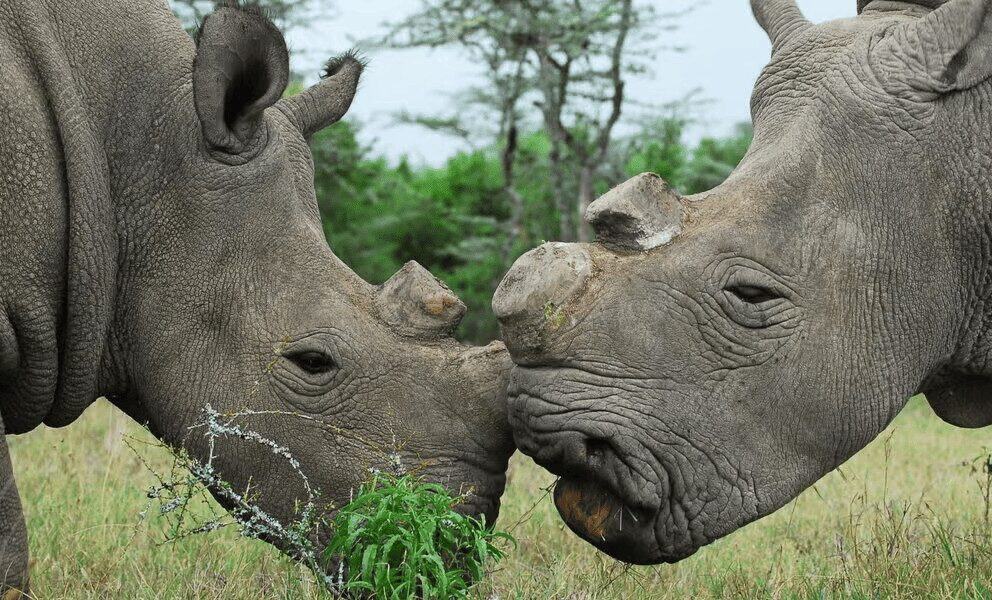
While dehorning rhinos offers a crucial short- to medium-term reprieve in the fight against poaching, it’s clear that no single solution will save them. The true victory for rhinos will come from a multi-faceted approach: continued scientific innovation, dedication from anti-poaching units, efforts to reduce the demand for rhino horn globally, and a collective commitment from governments, communities, and individuals worldwide.
Fortunately, a broader movement is already underway. The Rhino Renaissance Campaign aims to rebuild the white rhino population in the Kruger National Park from just over 2,000 to 12,000 within the next decade. In South Africa, conservancies like Munyawana are growing populations through rewilding. Cross-border work in places like Mozambique, Zimbabwe, and across the Greater Limpopo region ensures that rhino protection is not confined to political boundaries. Government and private sector collaboration is increasing within Integrated Wildlife Zones, providing better security and shared stewardship.
By understanding the complexities and supporting the tireless work of conservationists, we can ensure that the majestic presence of rhinos continues to awe generations to come, not just in memory, but in thriving wild populations.






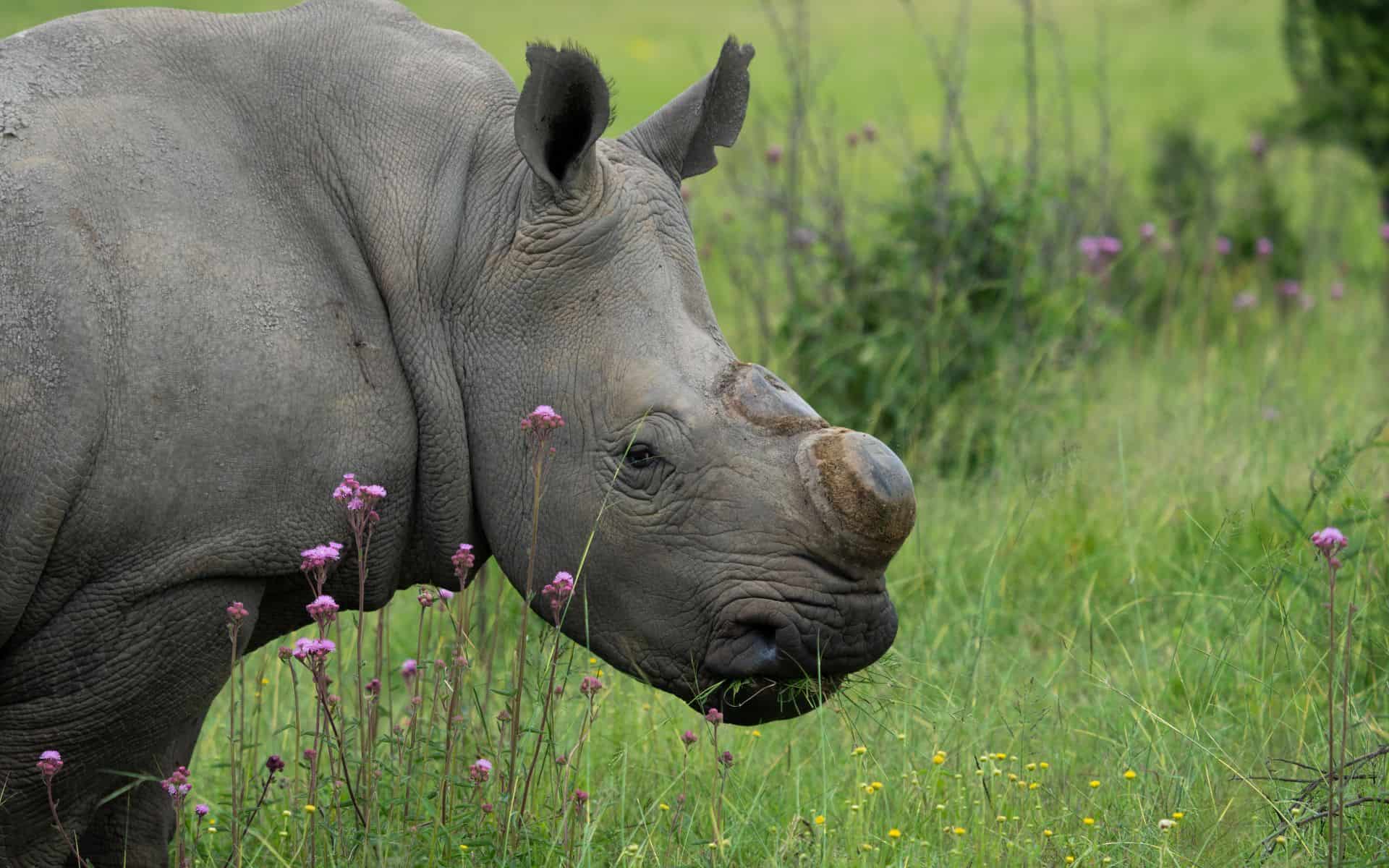

 Copy Link
Copy Link
 Share on LinkedIn
Share on LinkedIn
 Share on Facebook
Share on Facebook
 Blog List
Blog List









Written by Thaakiera Ackerdien
• Travel Writer
Part of the Rhino Safaris Collection